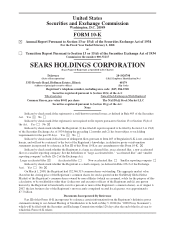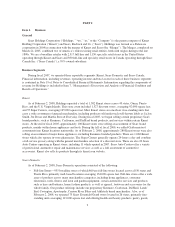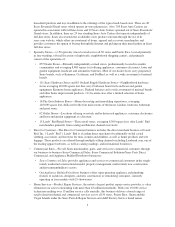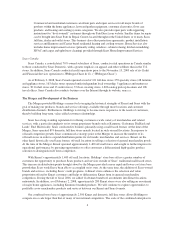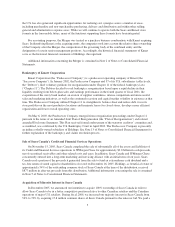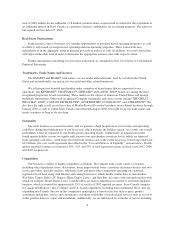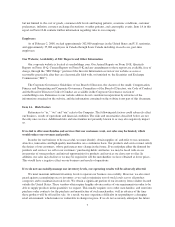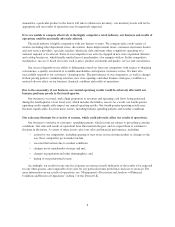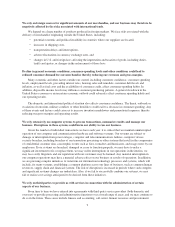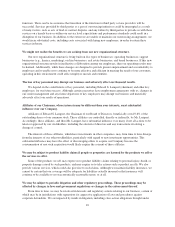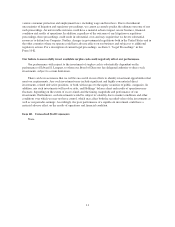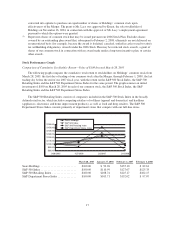Sears 2007 Annual Report Download - page 9
Download and view the complete annual report
Please find page 9 of the 2007 Sears annual report below. You can navigate through the pages in the report by either clicking on the pages listed below, or by using the keyword search tool below to find specific information within the annual report.We rely on foreign sources for significant amounts of our merchandise, and our business may therefore be
negatively affected by the risks associated with international trade.
We depend on a large number of products produced in foreign markets. We face risks associated with the
delivery of merchandise originating outside the United States, including:
• potential economic and political instability in countries where our suppliers are located,
• increases in shipping costs,
• transportation delays and interruptions,
• adverse fluctuations in currency exchange rates, and
• changes in U.S. and foreign laws affecting the importation and taxation of goods, including duties,
tariffs and quotas, or changes in the enforcement of those laws.
Decline in general economic conditions, consumer-spending levels and other conditions could lead to
reduced consumer demand for our merchandise thereby reducing our revenues and gross margins.
Many economic and other factors outside our control, including consumer confidence, consumer spending
levels, employment levels, prevailing interest rates, housing sales and remodels, consumer debt levels and
inflation, as well as fuel costs and the availability of consumer credit, affect consumer-spending habits. In
addition, disposable income levels may influence consumer-purchasing patterns. A general slowdown in the
United States economy or an uncertain economic outlook could adversely affect consumer spending habits and
our operating results.
The domestic and international political situation also affects consumer confidence. The threat, outbreak or
escalation of terrorism, military conflicts or other hostilities could lead to a decrease in consumer spending. Any
of these events and factors could cause us to increase inventory markdowns and promotional expenses, thereby
reducing our gross margins and operating results.
We rely extensively on computer systems to process transactions, summarize results and manage our
business. Disruptions in these systems could harm our ability to run our business.
Given the number of individual transactions we have each year, it is critical that we maintain uninterrupted
operation of our computer and communications hardware and software systems. Our systems are subject to
damage or interruption from power outages, computer and telecommunications failures, computer viruses,
security breaches, including breaches of our transaction processing or other systems that result in the compromise
of confidential customer data, catastrophic events such as fires, tornadoes and hurricanes, and usage errors by our
employees. If our systems are breached, damaged or cease to function properly, we may have to make a
significant investment to fix or replace them, we may suffer interruptions in our operations in the interim, we
may face costly litigation, and our reputation with our customers may be harmed. Any material interruption in
our computer operations may have a material adverse effect on our business or results of operations. In addition,
we are pursuing complex initiatives to transform our information technology processes and systems, which will
include, for many systems, establishing a common platform across our lines of business, such as common human
resources, supply chain and financial systems. The risk of disruption is increased in periods where such complex
and significant systems changes are undertaken. Also, if we fail to successfully combine our systems, we may
fail to realize cost savings anticipated to be derived from these initiatives.
We rely on third parties to provide us with services in connection with the administration of certain
aspects of our business.
From time to time we have entered into agreements with third-party service providers (both domestic and
overseas) to provide processing and administrative functions over a broad range of areas, and we may continue to
do so in the future. These areas include finance and accounting, call center, human resources and procurement
9

